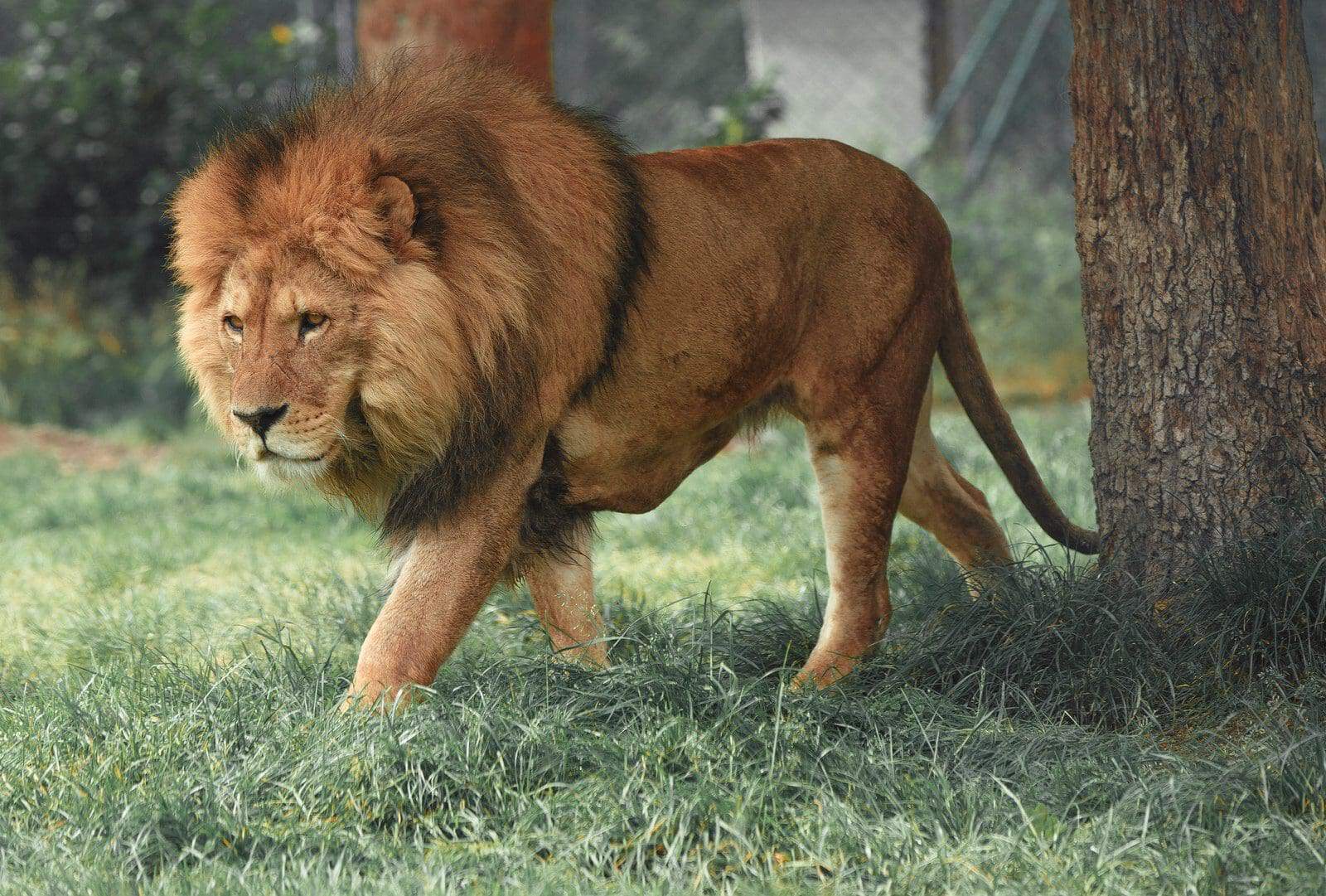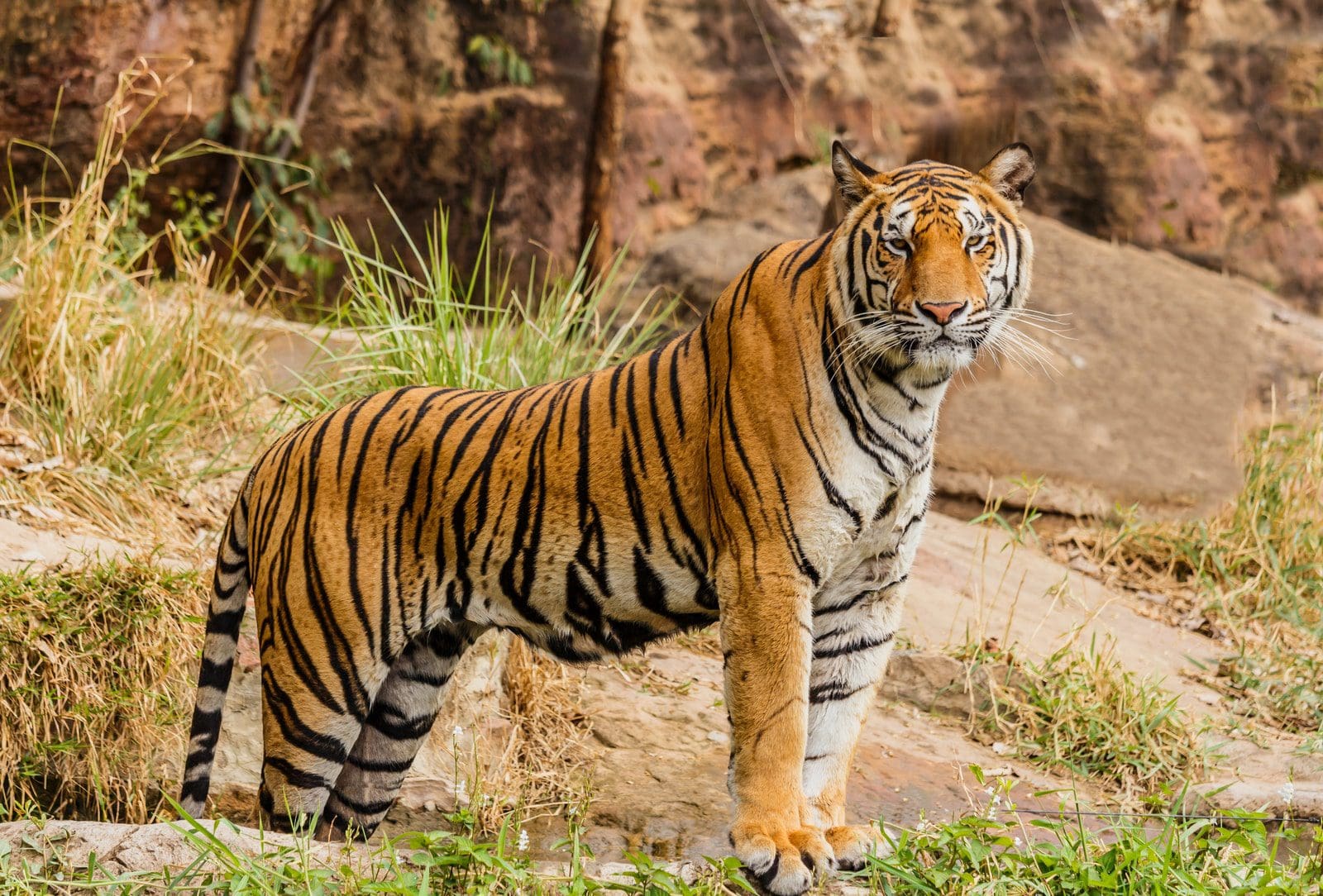There are many pure souls, but not all are human; some are wild animals.
‘Wild animal’ is a term which is used to refer to those animals that cannot be domesticated because of their dangerous traits. Mankind depends largely on wild animals for products, clothes, medicine, etc.
They are a part of our environment, and they make an addition to the beauty and balance of nature. Hence, the preservation of wildlife is critical.
Two of the most popular wild animals are Lion and Tiger, the former is the king of the forest, and the latter is the national animal of four countries, including India.
Key Takeaways
- Lions are large cats native to Africa and a small region in India. They are known for their social behavior, living in pride groups, and characterized by their tawny fur and males’ distinctive manes.
- Tigers are the largest species of big cats, native to Asia, known for their solitary behavior and distinctive orange fur with black stripes.
- Both lions and tigers are apex predators in their respective habitats, but they differ in size, appearance, behavior, and geographic distribution.
Lion vs Tiger
Lion is a wild animal and a large cat of the genus Panthera; it is native to Africa and India and is characterized by pale yellow skin, round ears, a broad-chested body, and a hairy tuft at the tail. Tiger is a wild cat that is recognizable for its white underside and dark black stripes on the orange fur.

Comparison Table
| Parameter of Comparison | Lion | Tiger |
|---|---|---|
| Crown | A lion is the king of the forest | Tiger is the national animal of four countries, including India |
| Behaviour | Competitive | Generally amicable |
| Appearance | Lions are less muscular than tigers, with no stripes on their body. | Tigers are more muscular and robust than lions, with black vertical stripes all over their body. |
| Height | Lions are taller than tigers | Tigers are more miniature than lions |
| Living habit | Lions live in groups | Tigers live alone |
| Speed | Lions are slower than tigers | Tigers are faster than lions |
What is Lion?
The Lion, the king of the forest, also a symbol of power and royalty, is a wild animal with pale yellow skin, a short rounded head, round ears, hairy tuft, and a deep-chested muscular body.
Lions exist in three different colours: white, pale yellow, ochre, deep orange-brown, and ash brown. The scientific name of a lion is Panthera Leo.
Lions prefer open scrub forests and mixed thorny deciduous forests to live in. The place’s temperature should not exceed 45°C in summer and should not go below 5°C in winter.
The total life span of a lion is 10-14 years. The record-making life span of the oldest lion was found to be 29 years.
Different types of lions are found in various regions. They are Katanga Lion, Congo Lion, Transvaal Lion, Barbary Lion, Nubian Lion, Asiatic Lion, and West African Lion.
A lion’s roar is so thunderous that it can be heard from eight kilometres away.
Lions are considered one of the laziest animals, sleeping 16-20 hours daily. Lions feed on grazing animals like Antelope, Zebras, Crocodiles, Baby Hippos, and Elephants.
The largest population of lions is found in India, consisting of around 2,400 in total.

What is Tiger?
A tiger is a wild animal with a muscular body, robust forelimbs, yellow irises, and stout teeth wearing the crown of the national animal of India, Bangladesh, Malaysia, and South Korea.
It is identified by its orange-brown fur having dark vertical stripes on it. Tigers exist in three colours – golden, white, and stripless snow white.
The scientific name of a tiger is Panthera Tigris. Tigers can live in all types of forests, be they dry and moist deciduous, thorny, or evergreen and semi-evergreen forests.
The life span of a tiger is between 10-15 years. The record-making life span of the oldest tiger was found to be 26 years.
Different types of tigers exist in various world regions, namely the Bengal Tiger, Caspian Tiger, Siberian Tiger, South China Tiger, Indochinese Tiger, Malayan Tiger, Javan Tiger, Bali Tiger, and Sumatran Tiger.
The Bengal and Siberian tigers are the tallest. They are also the heaviest ones weighing more than 300 kg (660 lb). Male and female tigers differ in almost all aspects, from appearance to behaviour.
Tiger is carnivorous. It eats medium-sized and large mammals. Also, it appears at the top of the food chain.
Baby tiger, known as a club, stays with the mother for about two years before becoming self-sufficient. The largest population of tigers is currently in India.

Main Differences Between Lion and Tiger
- Lions have pale-yellow fur skin, whereas tigers have orange-brown skin fur with black vertical stripes all over the body.
- In terms of physical strength, tigers are much stronger than lions.
- Lions are very competitive, while tigers are friendly.
- If the speed is compared, tigers are faster than lions.
- Lions live in groups, but tigers prefer being alone.
- Tigers are much more active than lions.
- Lions hunt in the daytime, whereas tigers hunt at night.
- Lion nurses the baby lion for 10-12 months, while the tiger nurses the baby tiger for 18-24 months.


The article serves as an engaging source of knowledge, highlighting critical aspects of lions and tigers and bolstering the significance of undertaking conservation measures for the welfare of these remarkable creatures.
Absolutely, the article’s meticulous portrayal of the key differences between lions and tigers reinforces the urgency of protecting their habitats and promoting coexistence for the benefit of our environment.
Fascinating article shedding light on the significance of preserving wildlife such as lions and tigers. The comparison table was particularly enlightening for me in understanding the differences between the two apex predators.
Indeed, the article provided insightful information about these magnificent creatures, and the vital importance of their conservation
I agree, the comparison table was very informative and helped visualize the differences between lions and tigers
The detailed descriptions of lions and tigers’ behaviors, physical attributes, and habitats in the article offer readers a comprehensive understanding of these powerful creatures. The insights provided highlight the significance of their conservation efforts.
I found the article’s comprehensive coverage of lions and tigers’ characteristics to be particularly enlightening. It emphasizes the need to prioritize wildlife conservation initiatives to ensure the survival of these magnificent species.
The article excels in delivering valuable information about the compelling attributes of lions and tigers, emphasizing their importance in the ecosystem. The insights presented strongly advocate for the preservation of these awe-inspiring animals.
The portrayal of the lion and tiger’s life span, natural habitat, and regional populations in the article fosters a deeper understanding of these majestic animals and the measures necessary to protect them.
The description of the diverse tiger species and their regional populations serves as an eye-opening account. It reinforces the importance of conservation efforts in preserving these valuable creatures.
I found it fascinating how the article provided detailed information about the different types of lions and tigers based on their regions. It’s truly remarkable to learn about these distinctions.
The article’s meticulous portrayal of the distinctive attributes and behaviors of lions and tigers underscores the indispensable role of conservation efforts in preserving the ecological balance and the precious diversity of our natural world.
Absolutely, the article serves as an enlightening guide, advocating for the protection of lions and tigers through the promotion of wildlife conservation initiatives that aim to safeguard the natural habitats of these remarkable creatures.
The article provides a comprehensive overview of the unique characteristics and habitats of lions and tigers. It effectively communicates the necessity of prioritizing conservation efforts to sustain and protect these magnificent animals.
The article succeeded in delivering a compelling narrative about lions and tigers, reinforcing the urgency of promoting conservation strategies for the sake of protecting these mesmerizing creatures.
The in-depth analysis of the notable differences between lions and tigers accentuates the essential role of conservation initiatives in preserving the ecological balance and safeguarding these captivating species.
The article effectively portrays the importance of preserving and conserving the natural habitats of lions and tigers. It emphasizes the critical role of these awe-inspiring animals in maintaining a balance in our ecosystem.
The article’s emphasis on the crucial role of lions and tigers in the ecosystem echoes the significance of implementing strategies for preserving their habitats and promoting coexistence with humans
This article has done an exceptional job in educating readers about the distinct differences between lions and tigers. The knowledge provided about their habitats and behaviors offers a substantial insight into wildlife conservation efforts.
Absolutely, the detailed insights into the characteristics of lions and tigers have contributed to highlighting the importance of wildlife conservation in safeguarding these remarkable species.
The detailed elucidation of lions and tigers’ traits and behavioural patterns effectively communicates the imperative need for wildlife conservation initiatives. The article serves as a powerful advocate for the protection of these awe-inspiring animals.
Absolutely, the article’s comprehensive insights into the distinguishing features of lions and tigers play a pivotal role in highlighting the critical significance of wildlife conservation efforts in preserving these incredible creatures.
The article adeptly differentiates between the key attributes of lions and tigers, providing readers with valuable insights. It serves as a compelling reminder of the importance of wildlife conservation efforts for these incredible species.